10+ Packing Slip Examples to Download
When we are dealing with shipments, attractive packages, and cargoes, we often need documents for identification as well as for safety and insurance. It is tough to deal with lost shipments, especially for shipping companies, for they need to recover them and find ways to track the shipment.
Furthermore, shipping companies would have a hard time if shipments or items contained in a shipment is switched with another item. To prevent this from happening, a document or label evidencing and enumerating the content of the shipment is needed to avoid these hassle. The document can be in a form of a packing label or a packing slip. You may also see salary slip examples.
In this article, different examples of packing slips are presented. Check them out in the next section.
Packaging Slip Invoice Example
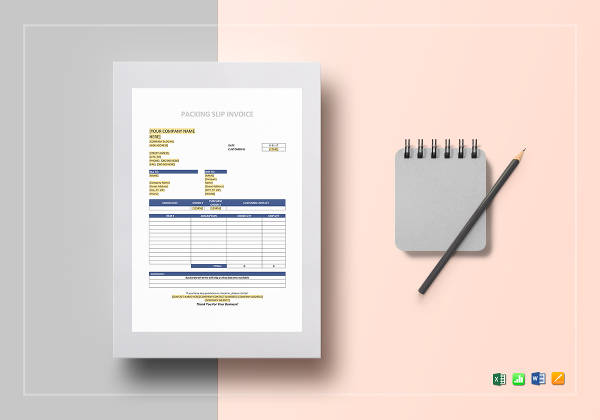
Clean Packing Slip Example
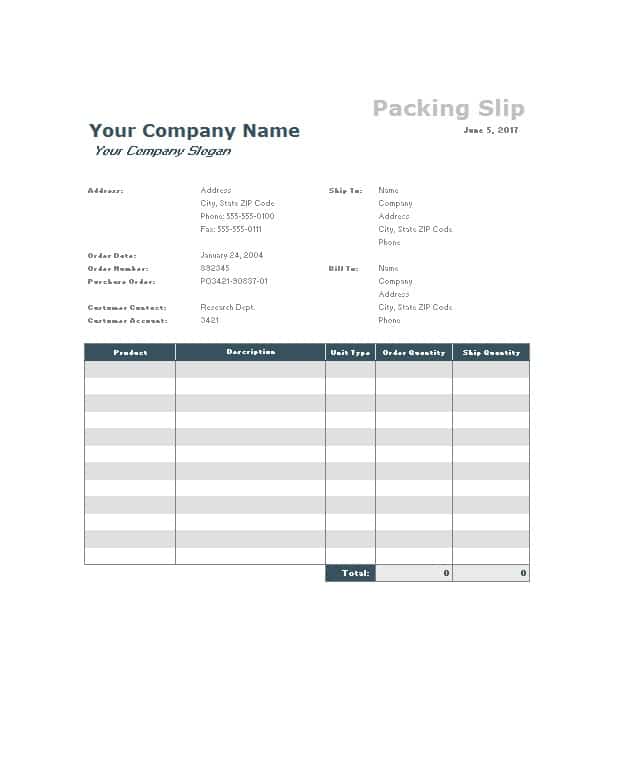
Elegant Packing Slip Example
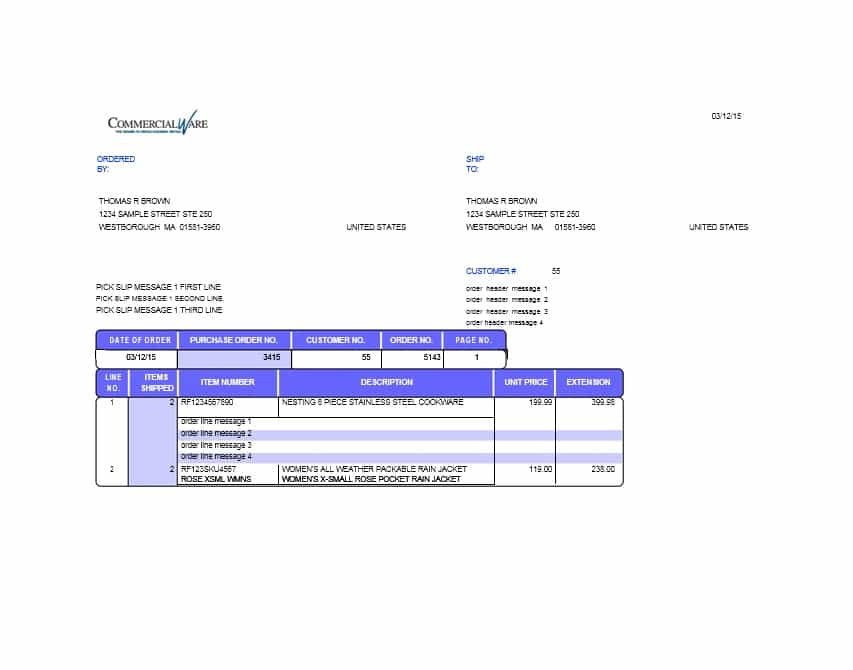
What Is a Packing Slip?
To begin with, let us first have an overview of a packing slip. What is a packing slip?
Primarily, a packing slip contains a list of items or products in details included in the shipment and usually comes with an order that is inside the shipping pouch or the package itself. This is intended not only for the customers but also for transport agencies, government authorities, and other related parties in the transaction for them to handle the package or shipment accordingly. You may also see deposit slip examples and templates.
The details included in general in the packing slip are the quantity, description, and weight of the items contained in the shipment excluded the pricing for each content. More of the details to be included in a packing slip are discussed in the next section.
A packing list is created either by the seller or by the shipping company and sent to the recipient, to where the goods are located, in order for the person handling the shipment to have an accurate tally of the goods being shipped as it is sent along with the items to their destination. They are only required if there are products being shipped and received for sale. You may also like payslip templates and examples.
This is also referred to as packing list, shipping list, waybill, bill of parcel, or unpacking note.
What to Include in a Packing Slip
1. Product description.
Generally, a product description must be included in a packing slip. It is important to include the color of the product so it will not be interchanged with another product of similar type.
2. Reference number.
A reference to the relevant commercial invoice number or item number must also be included in the packing slip as this is important to compare if the two numbers matched when it arrives in the destination. You may also see payment receipt examples & samples.
3. Type.
The type of package must also be specified, for example, box, carton, and vials. This gives the authorized person the knowledge on how to handle appropriately the product that is being shipped.
4. Weight.
The net and gross weights of each package must also be present in the packing slip, and these must be stated in pounds or tons and converted into a metric equivalent, except where the buyer or government regulations require otherwise. The weight should be made known to the handler of the good so they can use appropriate measures in handling the product or the shipment. You may also like cash receipt examples & samples.
There are also times when the cost of the shipment depends on the weight of the items to be shipped. Hence, it is important that the weight must be disclosed.
5. Legal measurements.
The legal measurements should also be included in the details. This must be expressed in inches and cubic feet and converted into a metric equivalent, except where the buyer or government regulations require otherwise. Similar to weight, the dimension of the item or product to be shipped may also be a factor for the cost of shipping. You may also check out company receipt examples & samples.
6. Package markings.
Specific identifiable markers, if any, should also be written down in the package slip to have a specific identification of the shipment.
7. Buyer and seller references.
There are times when there are specifications and preferences requested by the buyer or seller. This must also be included in the packing slip. You might be interested in catering receipt examples & samples.
Elemental Packing Slip Example
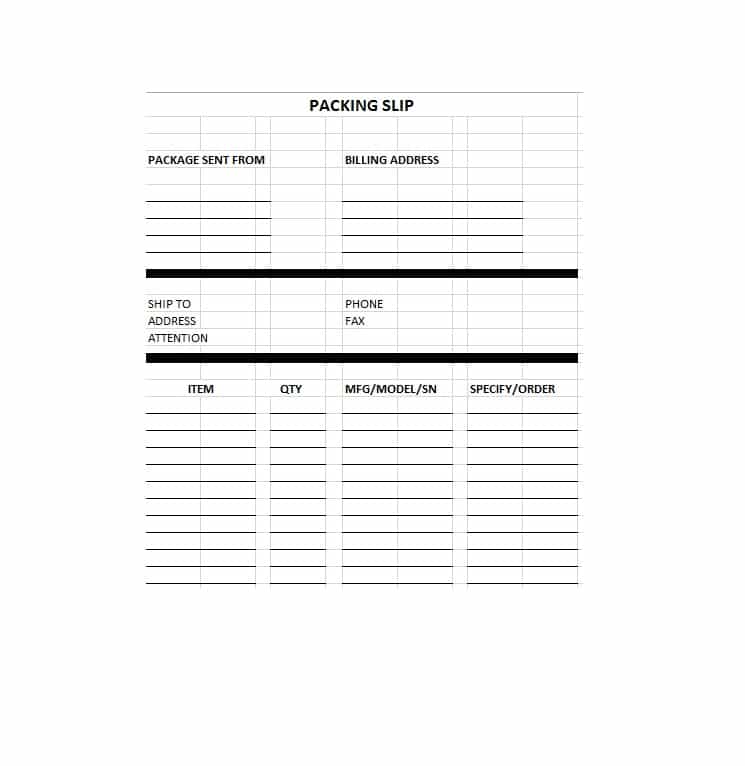
Minimalist Packing Slip Example
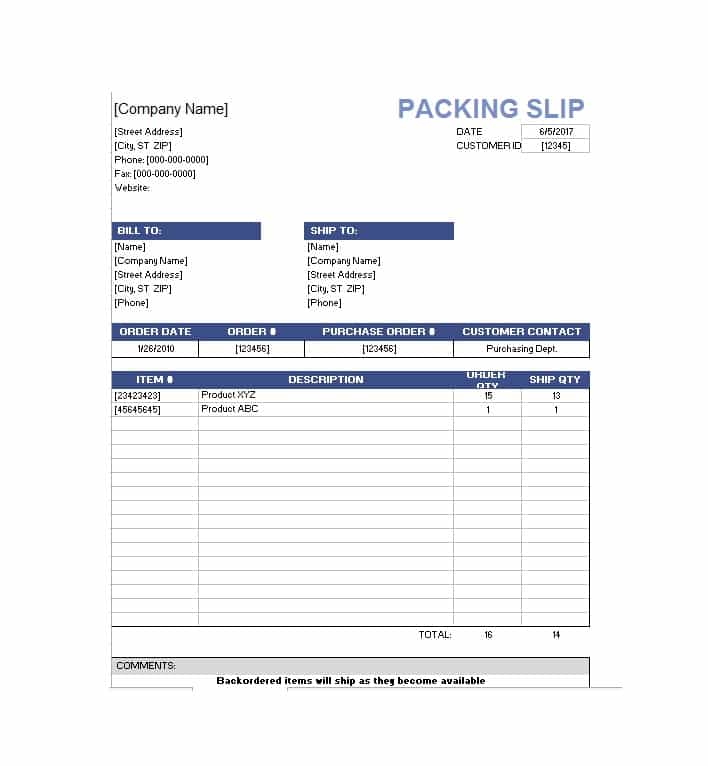
Ordinary Packing Slip Example
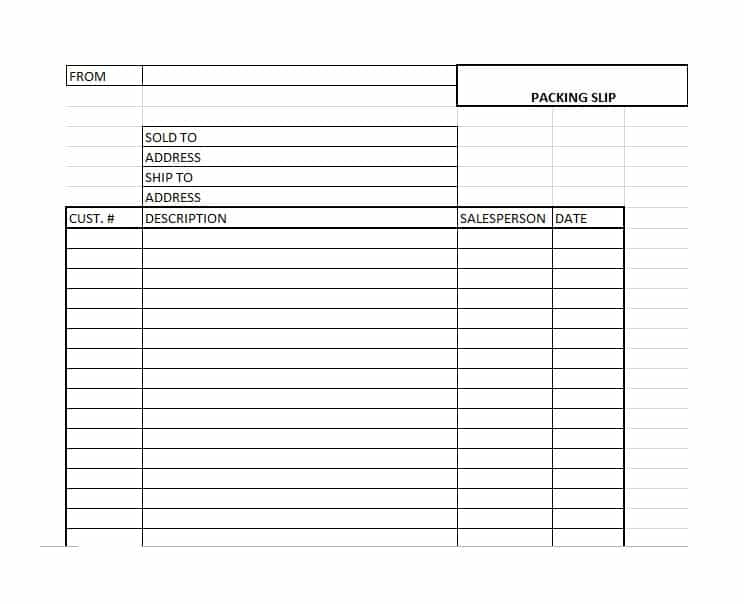
Plain Packing Slip Example
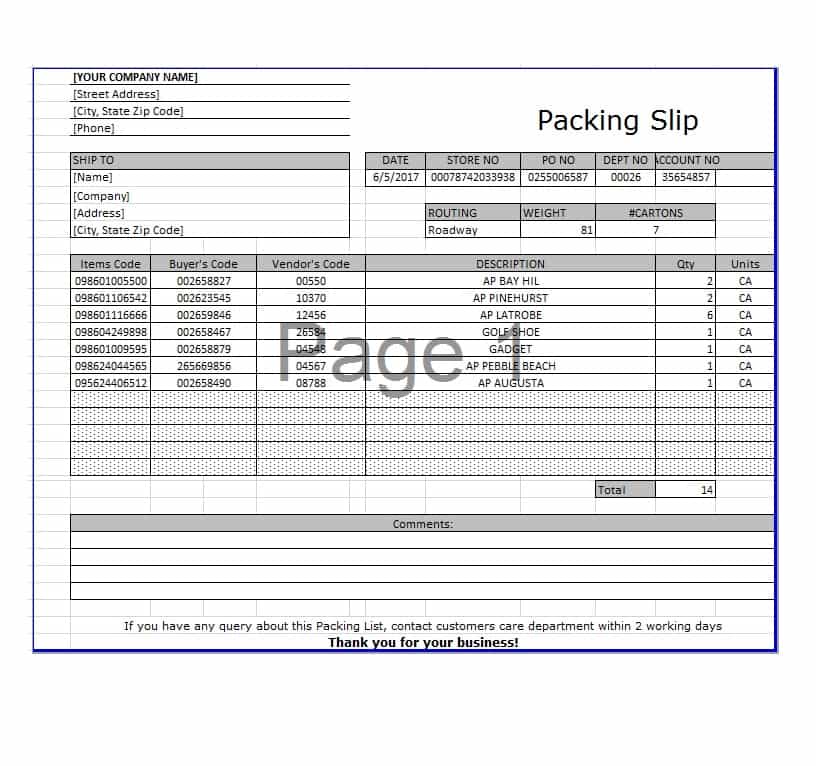
Importance of Packing Slip in General
1. They provide a complete list of the items included in the cargo or shipment.
2. They are helpful in identifying lost cargo especially for carrier and insurance claims.
3. They provide a map of the cargo or shipment to enable the buyer to easily unpack and stock the shipped goods accordingly and with appropriate care. You may also see official receipt examples & samples.
4. In case of inspection and government requirement, they permit inspection by customs authorities.
Importance of Packing Slip in an Export Document
1. It provides the exact count of the product being shipped.
2. It helps the buyer to accurately tally the product that they receive.
3. It assists the issuance of the inland bill of lading.
4. It can be used as supporting document for reimbursement under a letter of credit. You may also like photography receipt examples & samples.
5. It is a document to support an insurance claim in case of loss or damage to the goods in transit.
6. It provides the necessary detail required for a certificate of origin.
7. It can be used to have a booking with the international carrier and the issuance of the international bill of lading.
8. It contains details to let the goods enter into a certain country.
9. It contains details required by the law for the Electronic Export Information filing in the Automated Export System (AES). You may also check out service receipt examples & samples.
10. It supports issuance of a Material Safety Data Sheet if the goods are deemed hazardous.
Common Export Documents
Undeniably, packing slips are important and are very much needed in a shipment of items or goods. However, there are other common export documents that are equally important in the identification of the goods in transit. Together, these documents comprise a well-packaged and presentable shipment. Other common export documents are as follows:
1. Basic Export Documents
This includes commercial invoice, which is a legal document describing the transaction details between the seller and the customer; export packing list, which is more detailed than an ordinary packing list that lists the information with regard to the seller, buyer, shipper, invoice number, etc.; and pro forma invoice, which is an invoice sent in advance to the buyer before shipping the goods.
2. Transportation Documents
Transportation documents may include airway bills which utilizes individual shippers such as Fed-Ex, UPS, etc.; bill of lading, a document between the shipper and the carrier and also acts as a receipt for the carrier upon delivering the goods; and an electronic export information (EEI), formerly known as the Shipper’s Export Declaration, is the export data and serves as statistics and control for export.
3. Export Compliance Documents
Documents included in export compliance documents are destination control statement, which is a legal statement declaring the goods to be exported are going to the listed destination, and export licenses, which are government-issued documents granting the licensee to export specific commodities in specific quantities to a particular location or destination. You may also see restaurant receipt examples & samples.
4. Certificate of Origin
A certificate of origin is an important document for those in international trading business. The exporter is responsible in verifying whether or not a certificate of origin is required for the shipment.
The other certificates of origin that may be required in a shipment are certificate of origin for claiming benefits under free trade agreements and certificate of origin for goods not manufactured in the USA. Note that some countries require the certificates of shipments to be official, therefore they have to be notarized, certified, and legalized by the proper offices. You may also like transfer receipt examples & samples.
5. Other Certificates for Shipping Specific Goods
Other certificates that may be required in the shipment of specific goods are certificate of analysis, certificate of free sale, dangerous goods certificate, fisheries certificate, fumigation certificate, Halal certificate, health certificate, ingredients certificate, inspection certificate, pre-shipment inspection certificates, insurance certificate, phytosanitary certificate, radiation certificate, and weight certificate. These certificates are required in some cases or for some specific goods that are being shipped.
6. Other Export-Related Documents
Other export-related documents may include the following: consular invoice, which gives a description of the goods being shipped and shows certain information regarding shipment; Canadian customs invoice, which is issued for liable and taxable export goods over $1600 Canadian dollars; dock receipt and warehouse receipt, which are used to transfer accountability for the safety of the cargo upon transfer. You might be interested in hotel receipt examples & samples.
It is better to have a copy of these documents on hand in case it will be lost during the shipments. Some authorities may also require copies for several documents.
Professional Packing Slip Example
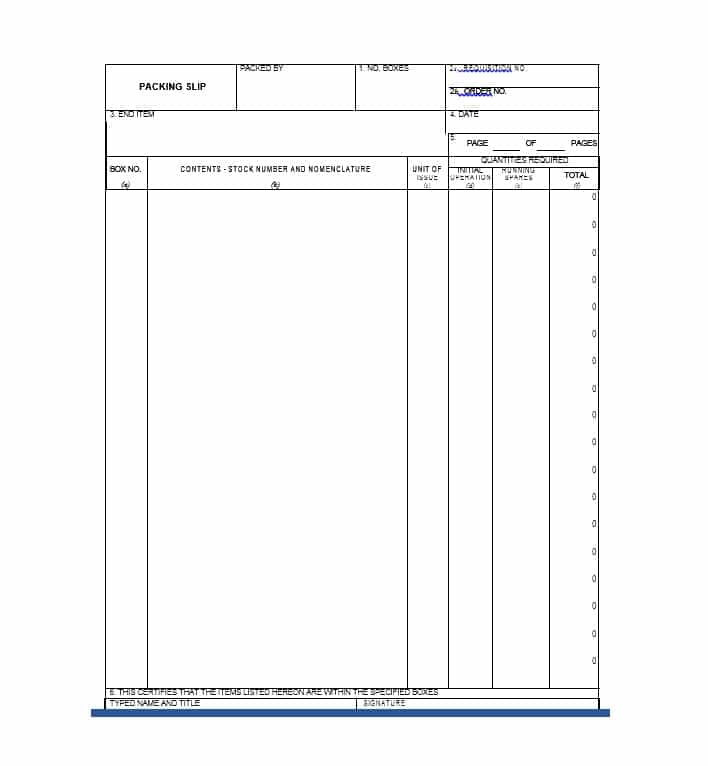
Simple Packing Slip Example
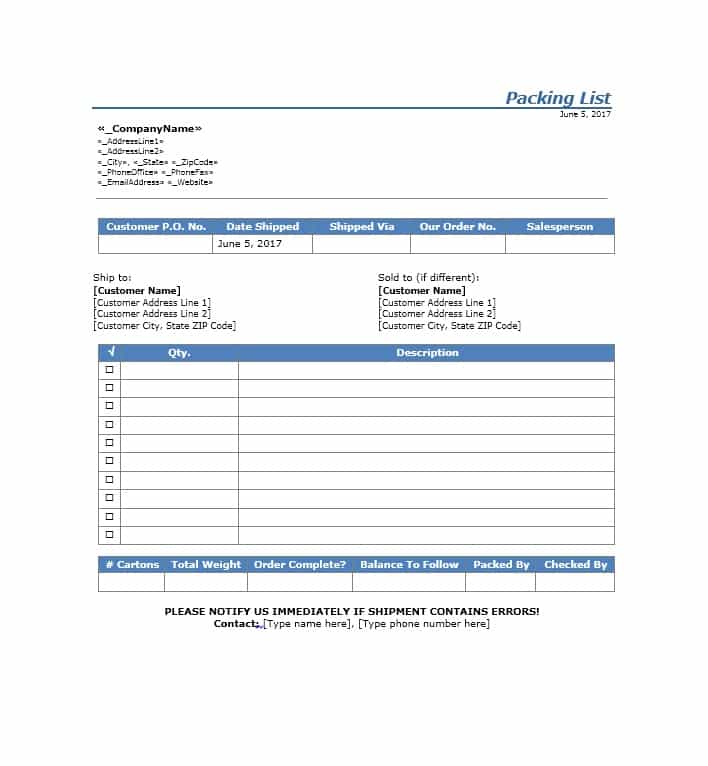
Sophisticated Packing Slip Example
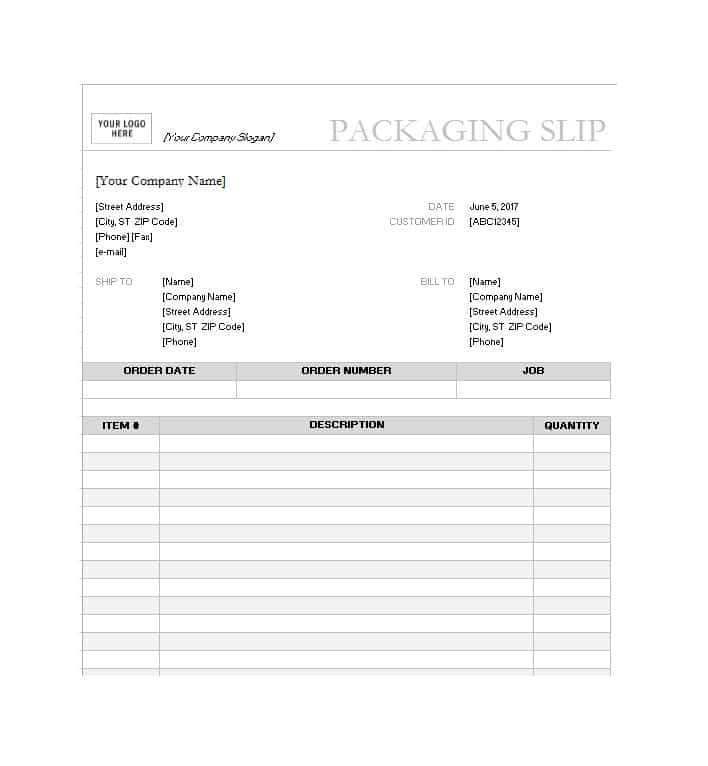
Uncomplicated Packing Slip Example
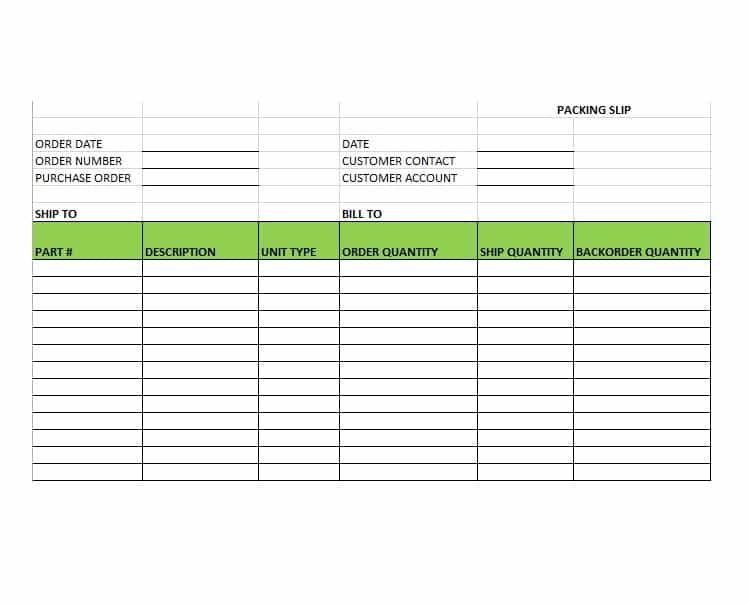
Sum Up
In sum, it is important to include a packing slip for any shipment as this is both for the benefit of the parties involved in the transaction such as the seller, buyer, authorities, and other interested parties. As a minimum, a packing slip contains the product description, reference number, type, weight, legal measurements, package markings, as well as buyer and seller preferences. You may also see sales receipt examples & samples.
In general, packing slips are important because they provide a complete list of the items in the shipment, are helpful in identifying lost cargo, provide a map of the cargo or shipment to enable the buyer to easily unpack and stock the shipped goods, and permit inspection by customs authorities. You may also like medical receipt examples & samples.
Apart from packing slips, there are other important common export documents that can be classified as basic export documents, transportation documents, export compliance documents, certificate of origin, other certificates for shipping specific goods, temporary shipment documents, and other export-related documents. All of these documents are important whether you are the sender of the shipped goods or you are recipient of such goods. You may also check out loan receipt examples & samples.
Lastly, don’t miss the examples of packing slips presented in the above section.


